Some of the links in this post may be affiliate links.
Like many plant problems, curling prayer plant leaves and browning can be caused by a number of different reasons, and this post contains 5 different reasons that will help you determine exactly what’s going on.
These tips apply to any plants that are part of the Marantaceae family whether it is the red prayer plant (Maranta leuconeura) or even Calathea plants. Here are 5 top reasons why your prayer plant leaves can curl.
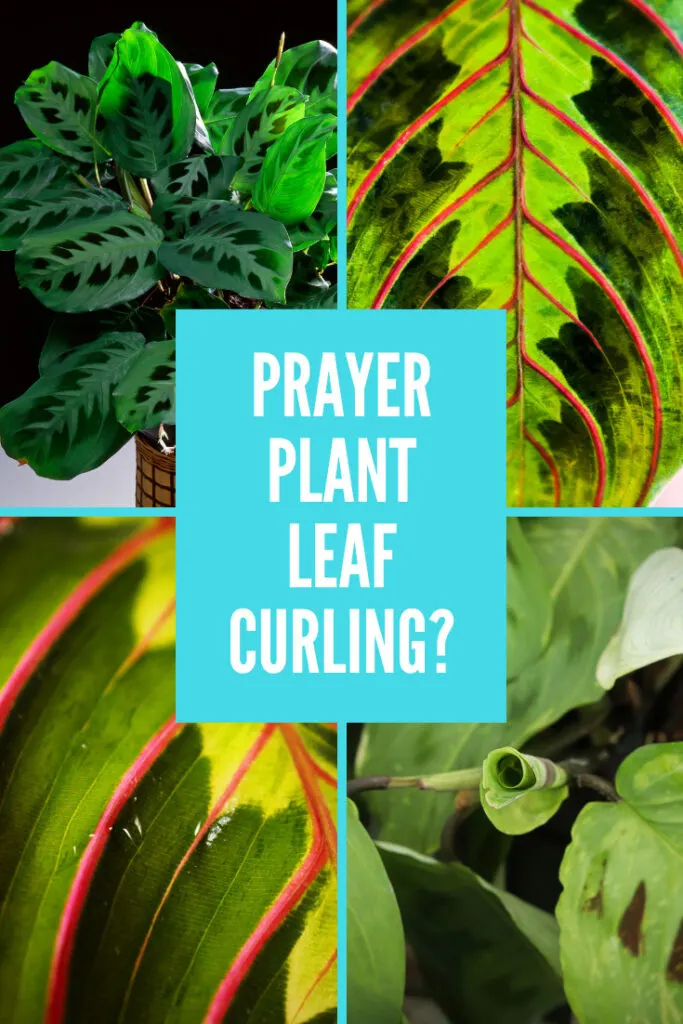
Table of Contents
5 REASONS FOR PRAYER PLANT LEAVES CURLING
CAUSE #1: SOIL TOO DRY
Potting soil that has gone completely dry is detrimental to prayer plants and probably the most common reason for curling.
Not only will it cause curling, but it can also cause brown tips on your foliage as well. This is the quickest way to kill your prayer plant if you are negligent with watering. This is not a plant that tolerates neglect well!
Prayer plants like a consistently moist potting mix so try and avoid letting them go completely dry. They detest dry conditions of any sort.
A good rule of thumb is to wait until the top inch or so is dry before watering again. If your plant has gone completely dry, make sure that you give your plant a thorough soaking and allow all excess water to drain away.
If your potting mix has gone really dry, you may have to water your plant several times in a row in order to recondition the soil to accept water again.
Make sure to use enough water and keep streaming it through until your potting mix is thoroughly moistened again.
If you are watering and the water seems to go straight through the drainage holes very quickly, then you know you’ll need to work at rewetting your soil. Use warm water and run it through several times.
Or you can bottom water your plant for a while until the potting mix is thoroughly moistened once again.
Always avoid using cold water as this can shock your plant.
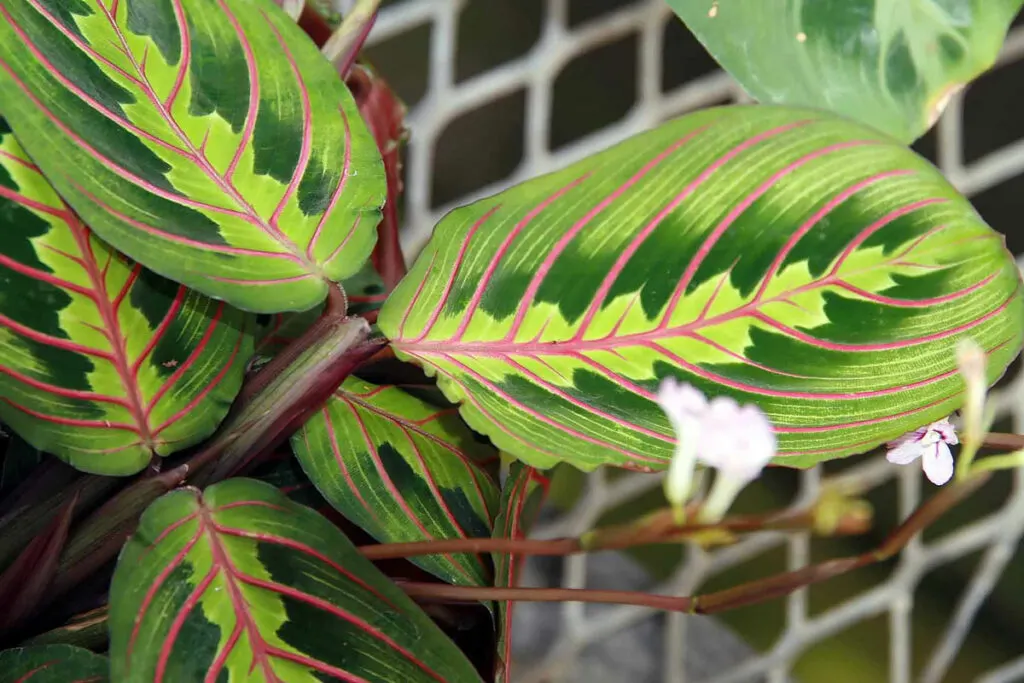
CAUSE #2. SOIL TOO WET
Ironically, having soil that is too wet can also cause your prayer plant leaves to curl as well. Good drainage is a must and having a drainage hole is always recommended.
Pay special attention when you water your plant, even if you have drainage holes. Never allow your plant to sit in water for extended periods of time.
Always discard excess water that happens to collect either in your plant’s saucer or inside your cachepot or decorative pot.
It’s easy to become lazy sometimes and allow this to happen! Overly wet soil can also cause fungus gnats to proliferate.
If your plant is sitting in water or stays too wet for too long, root rot can easily set in.
If the roots have rotted, your plant has no way to take in water to supply to the leaves, and ironically this has the same effect as “underwatering” your plant.
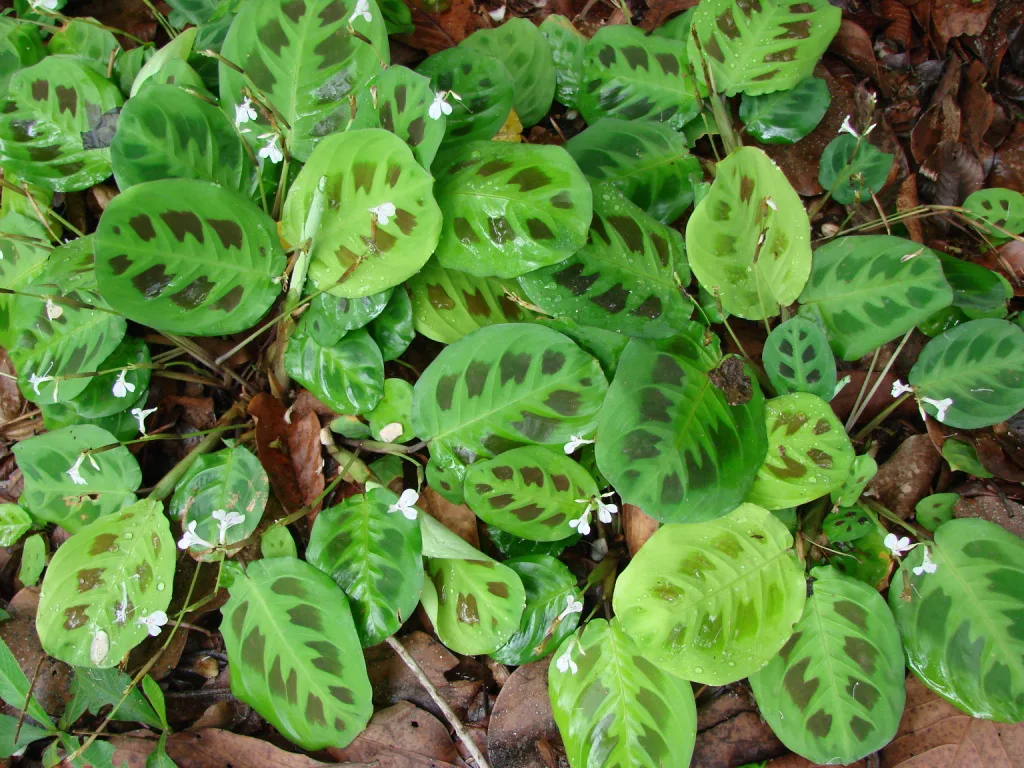
CAUSE #3. POOR WATER QUALITY
Prayer plants can be sensitive to water quality, particularly if you are using tap water. There are a lot of additives found in tap water (various chlorine compounds, fluoride, minerals) that can accumulate in your soil and cause curling and also browning.
If you use a water softening system in your home, many of these replace the calcium and magnesium ions with sodium ions.
Sodium is toxic to plants and can cause both browning and curling of your leaves and eventual death over time.
Rain water is best for prayer plants, but you can also use filtered water, RO water or even distilled water.
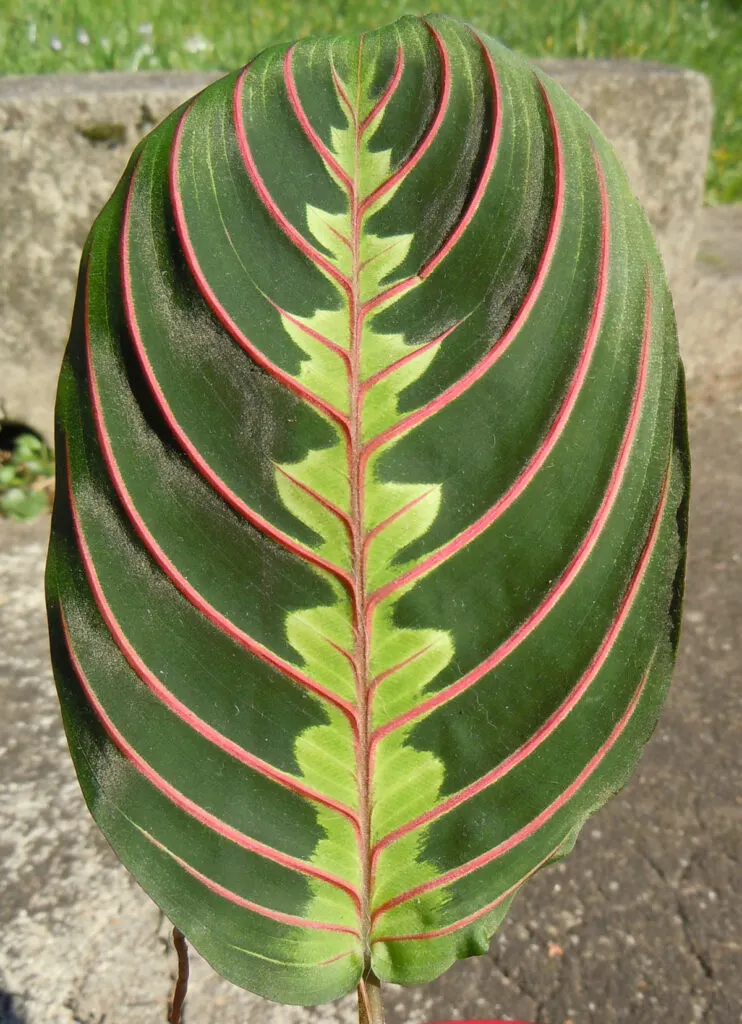
And if you are sick of continually buying distilled or filtered water, I have a solution. I started using a ZeroWater pitcher and filter. They come in different pitcher sizes to fit your needs, and you can purify your own water at home easily.
The purity will be similar to RO water, and your plants will love it! It is also wonderful to use for Calatheas which are very sensitive to tap water as well.
CAUSE #4. TEMPERATURE EXTREMES
Being native to the jungles of Brazil, prayer plants like it warm and they enjoy a consistently stable environment in your home.
Avoid situating your plant in front of a cooling or heating vent, and avoid drafty windows.
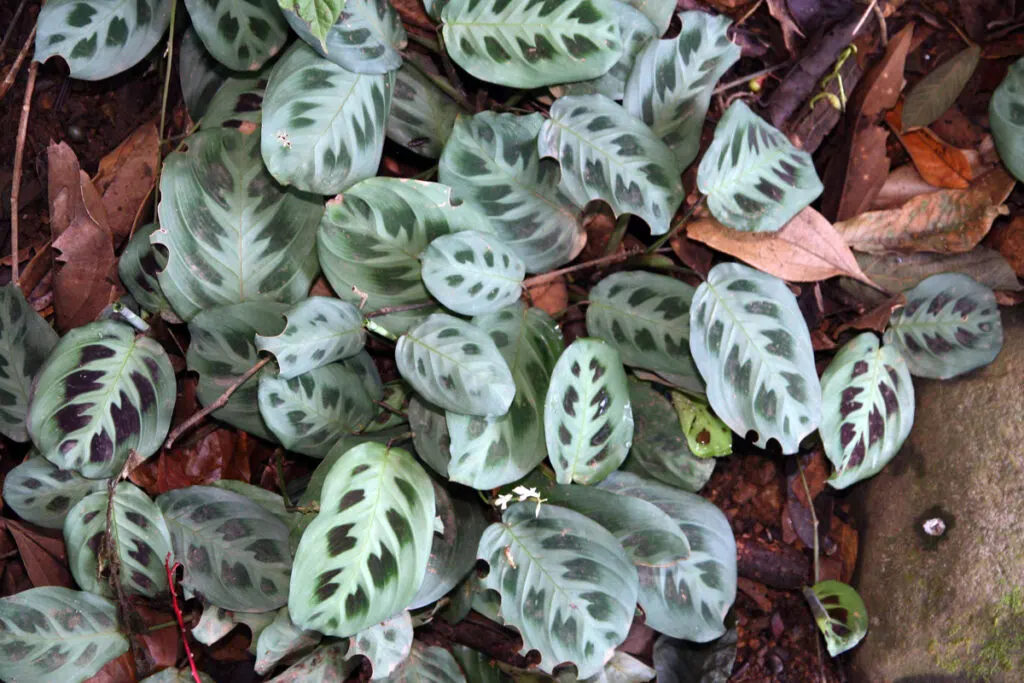
CAUSE #5. LOW HUMIDITY
These plants are tropical plants from the jungles of Brazil, so it is no wonder that they they will protest in our stale, dry indoor air.
Try and create a more humid environment indoors if at all possible, especially if you run forced air heat like I do in the winter months.
To increase your humidity level, you have a few options. You can use a humidity tray or make a pebble tray where you can add water and set your plant on top. Water will evaporate and create a more humid microclimate for your plant.
Or you can purchase a humidifier.
Since I have a lot of plants, running a humidifier is the most efficient and practical method for me.
Creating a more humid environment will also help deter spider mites since they tend to proliferate in dry air.
Put that spray bottle down though. Misting does nothing to increase the humidity of your air, contrary to popular practice. It can even contribute to fungal disease if you overdo it, especially if your air circulation is poor.
SOME ADDITIONAL PRAYER PLANT CARE TIPS
- Keep in mind that all plants in the Marantaceae family will “pray” and their leaves fold up at night time, and then relax them back down during the day. This is not to be confused as being a problem! This response to light is called photonastic movement and prayer plants and Oxalis triangularis are great examples of this phenomenon.
- Prayer plants thrive in bright indirect light, so avoid any intense sunlight, especially mid-day direct sun. Too much direct sunlight can cause curling leaves (especially since it will accelerate the rate at which your soil dries out). A couple hours of morning sun or late afternoon sun is safe enough though indoors, especially in the winter months.
- Situate your plant right in front of a northern window (if you’re in the northern hemisphere) or a southern window (if you’re in the southern hemisphere). These will provide enough light (all indirect) for your plant to thrive. An Eastern facing window with morning sun is also great since morning sun is gentler. If you have super sunny windows, use a sheer curtain to diffuse the sun.
If you keep your plant too far from a window in a dark spot, this will increase the time it takes for your soil to dry out, and can potentially lead to root rot and leaf curl, especially if you have your plant in a pot that is too large and poorly draining soil. Not to mention, it will slow down your plant’s growth rate.
- Did you know that these plants also bloom? Be sure not to miss my prayer plant flower post.

Are you having any issues with your prayer plants? Comment below. I’d love to hear!

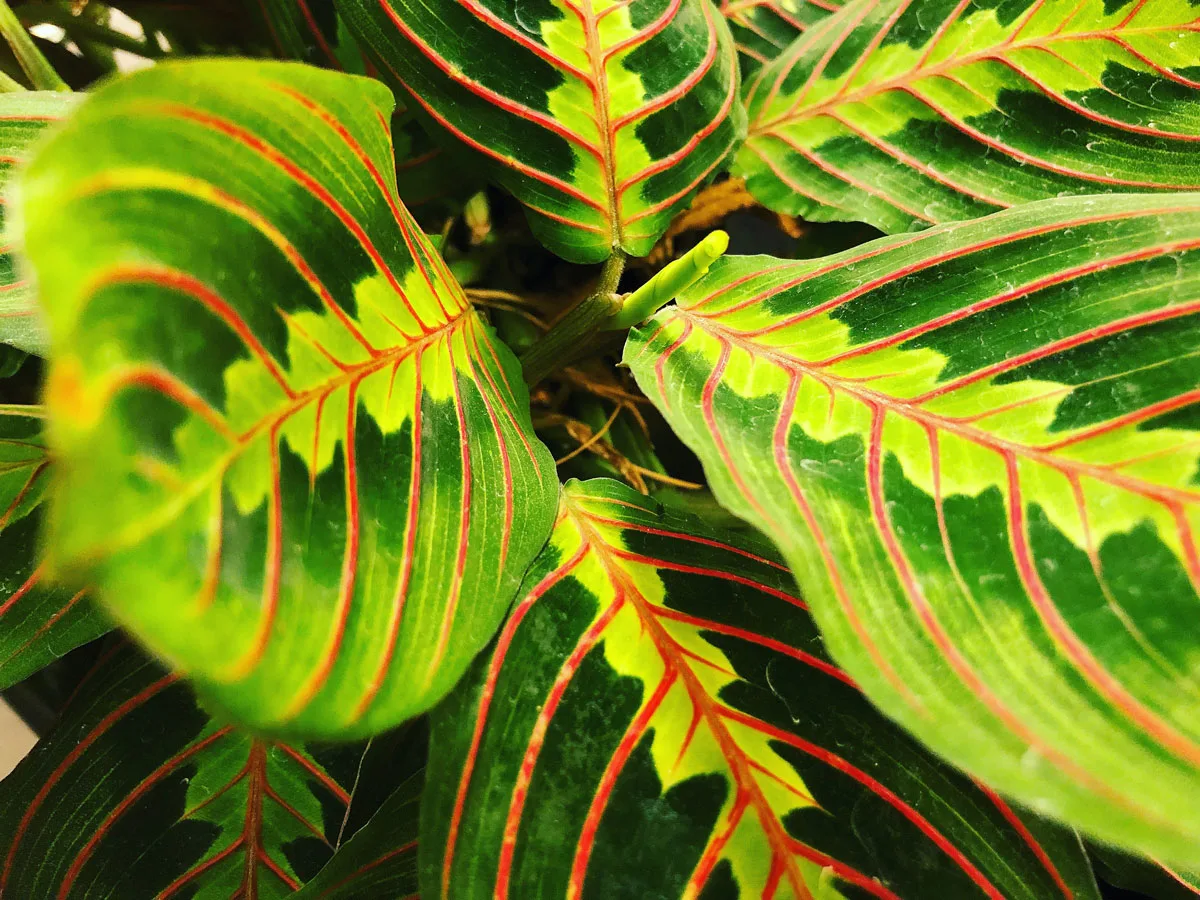
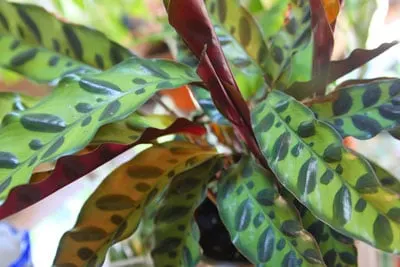

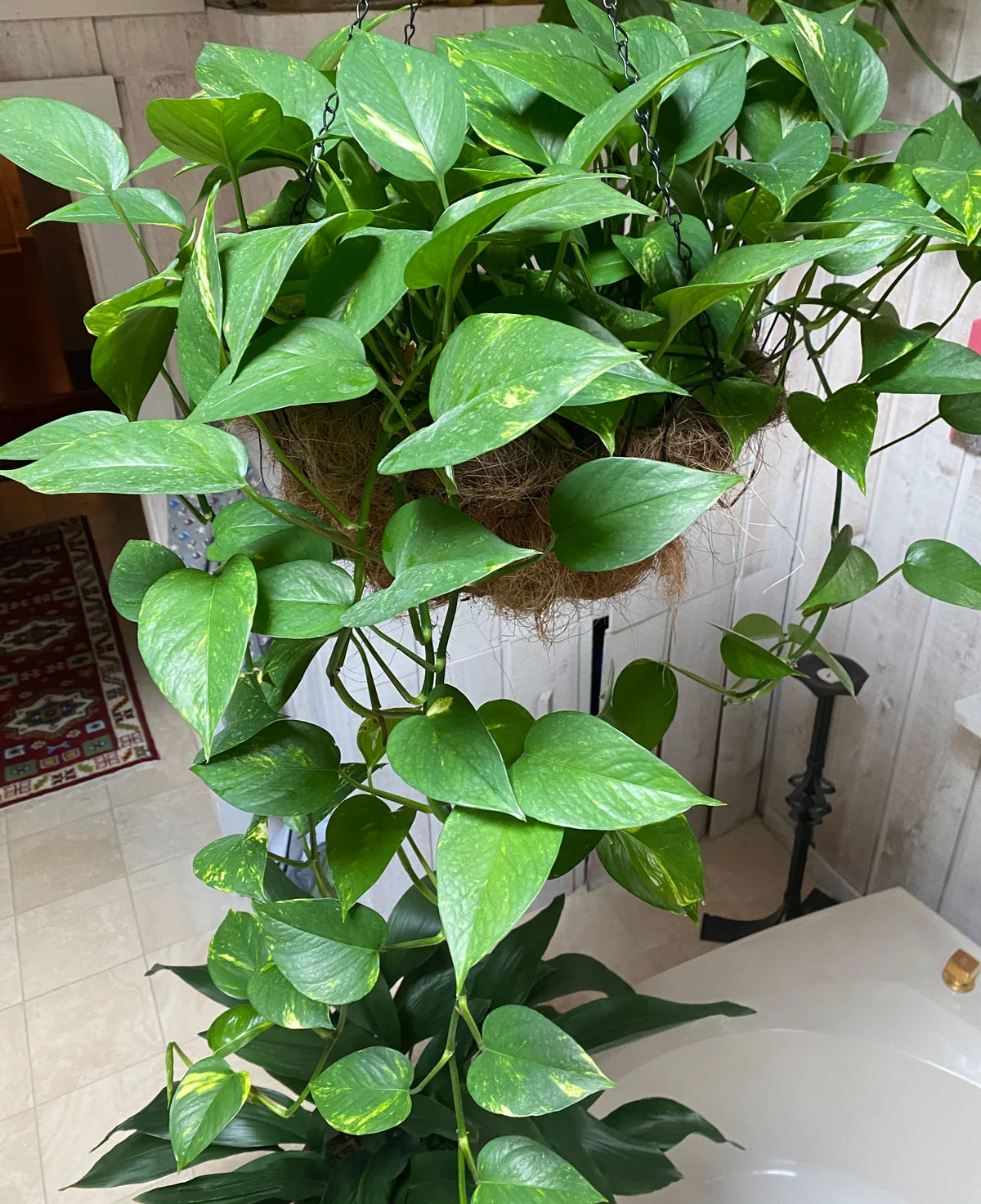
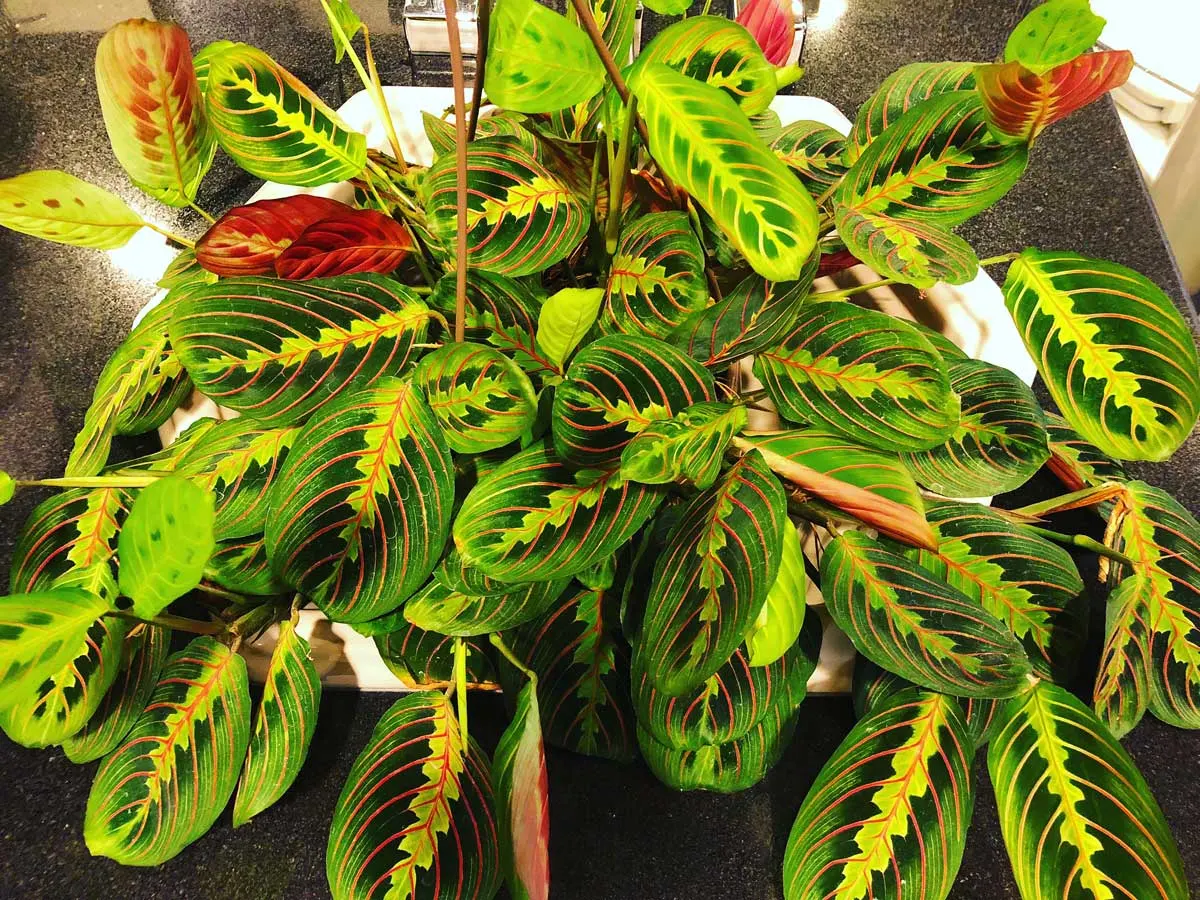
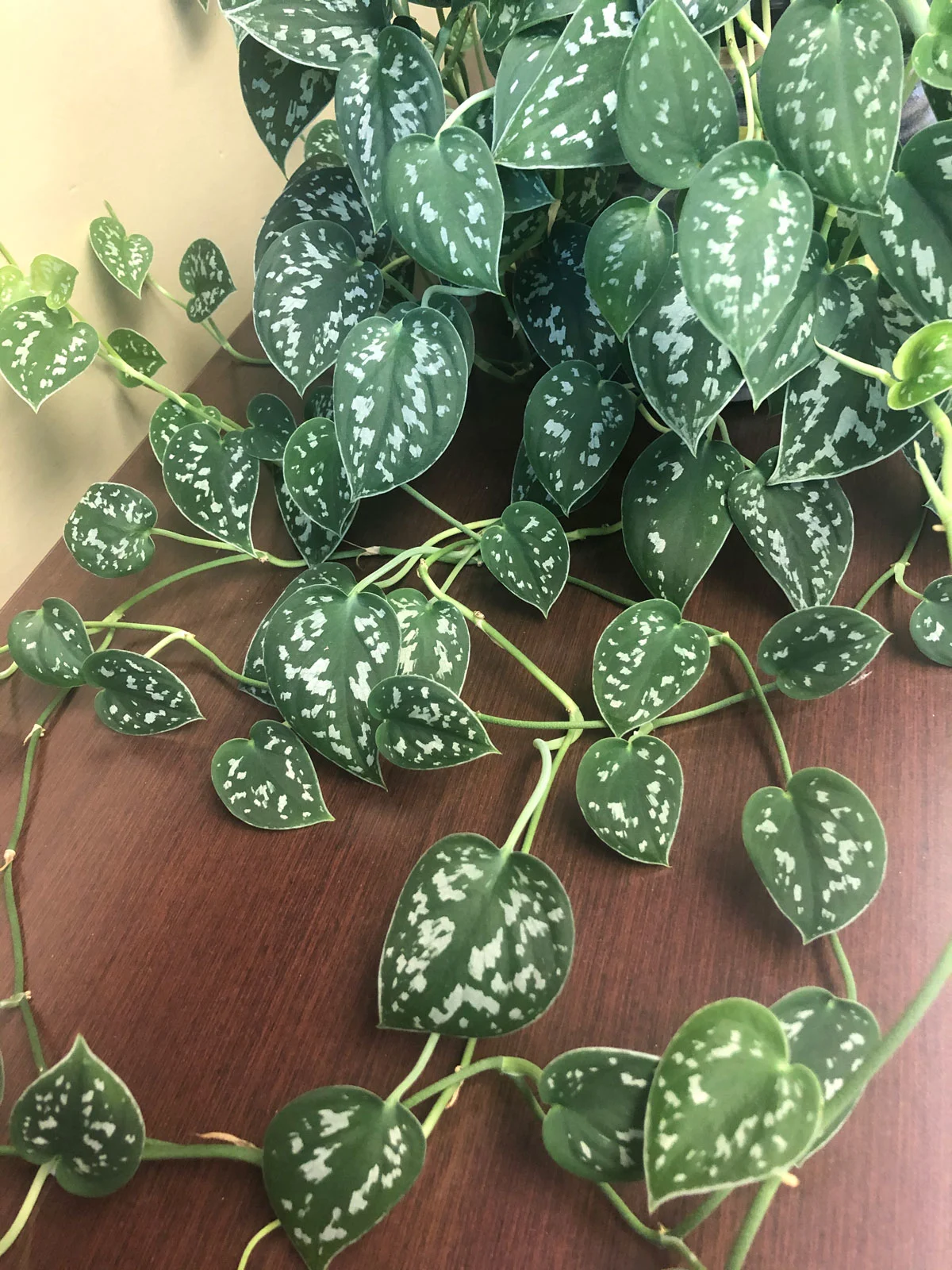
Carolyn Yurkovich
Monday 15th of January 2024
My prayer plant has never bloomed. What am I doing wrong.
Raffaele
Thursday 25th of January 2024
Eventually it will, if your plant is getting enough light.
Linda
Sunday 8th of October 2023
Hi, I have rusty looking areas on my prayer plant leaves, can you help okease
Raffaele
Monday 9th of October 2023
It's hard to say without seeing a photo. It could be from drying out too much, perhaps water quality (do you use tap water?) or could even be a fungus.
Katrina Wilson
Tuesday 12th of September 2023
I have a prayer plant. The leaves have started to brown and the plant was full but now has thinned out. The leaves are now small.should I cut off the brown curled leaves? I really want to save this plant but I’m stunned as to what to do.
Raffaele
Wednesday 13th of September 2023
If they are fully browned, you can cut them off. Has your soil dried out a lot?
Carol
Thursday 6th of July 2023
My prayer plant has recently had a number of leaves (at the bottom) browning and drying up, I cut those off. It is still getting new leaves. I do have it on a tray with pebbles, should I keep water in the tray?
Raffaele
Friday 7th of July 2023
Hi Carol! Has the soil dried out at all? Or more than normal? And yes, it would be a good idea to add water to the tray in order to provide more humidity.
Sheila
Friday 14th of October 2022
Thank you for all the information my prayer plant leaves are all curled and I think I may loose it I have repotted it to dry out the soil that I think it was to wet also I found the roots around in a circle. Your idea’s will help I think I was doing everything wrong.
Raffaele
Friday 14th of October 2022
Glad you found it helpful Sheila!